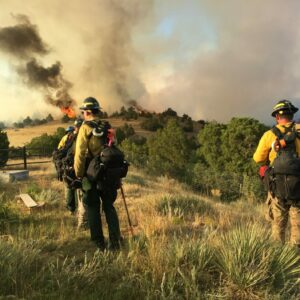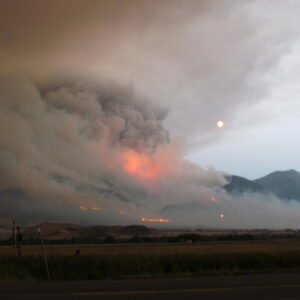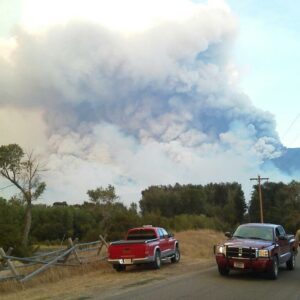Integrating Resiliency Planning
Did you know wildfires are currently ripping through hundreds of thousands of acres of U.S. land, charring forests, endangering communities, and impacting watersheds?
Naturally occurring and controlled forest fires are a healthy part of our ecosystems—a cleanse of overgrown foliage and deadwood. However, recent years have seen a rise in larger, more frequent wildfires across the western U.S., many of which have been exacerbated by a changing climate.
WNR’s Dr. Megan Burke helps agencies and communities prepare and respond to natural disasters, adapt to climate impacts, and implement resiliency planning for future events.
“In a lot of forested areas, we will have wildfires. It’s not a matter of if, but when,” Dr. Burke explains. “We also know the fires will impact watersheds. Sediment will infiltrate our streams and reservoirs. So, how do we ensure we’re prepared to deal with these events?”
The answer: Integrated resiliency planning.
Environmental hazards, such as wildfires, floods, or droughts, are rarely siloed events. Poke one domino, and more topple over. Droughts limit water supply and increase the likelihood of wildfires. Wildfires kill vegetation, alter topsoil, pollute watersheds, and warm our atmosphere. Warmer climates bring earlier snow melt and rainfall, which extends the dry seasons. Rain in burned areas produces runoffs that carry sediment and debris, lowering water quality.
If these hazards are integrated, then our approaches must be too.
“These issues need collaboration across agencies and disciplines,” Dr. Burke says. “We need integrated resiliency planning and doing things in a more holistic way. That’s how we get ahead.”
At RESPEC, Dr. Burke, Deb Shewfelt, Lee Rosen, David Gallegos, and many others are looking for ways to pull information together that helps our clients prepare for the next climate-related disaster, whether it’s a drought in Montana, flooding in New Mexico, or wildfires in Colorado.
With our experts in water, energy, infrastructure, geology, planning, and data, RESPEC can offer a full network of internal resources for resiliency planning. We can help address storm water storage for droughts, post-fire flooding, water rights, and climate adaptation planning. Then our data and technology experts can disseminate this information through models, dashboards, and immersive experiences.
RESPEC has the tools and people to help clients combat disasters. Through integrated resiliency planning, we can give clients these tools to identify and prioritize cost-effective efforts that reduce significant climate impacts.





Stay in Touch